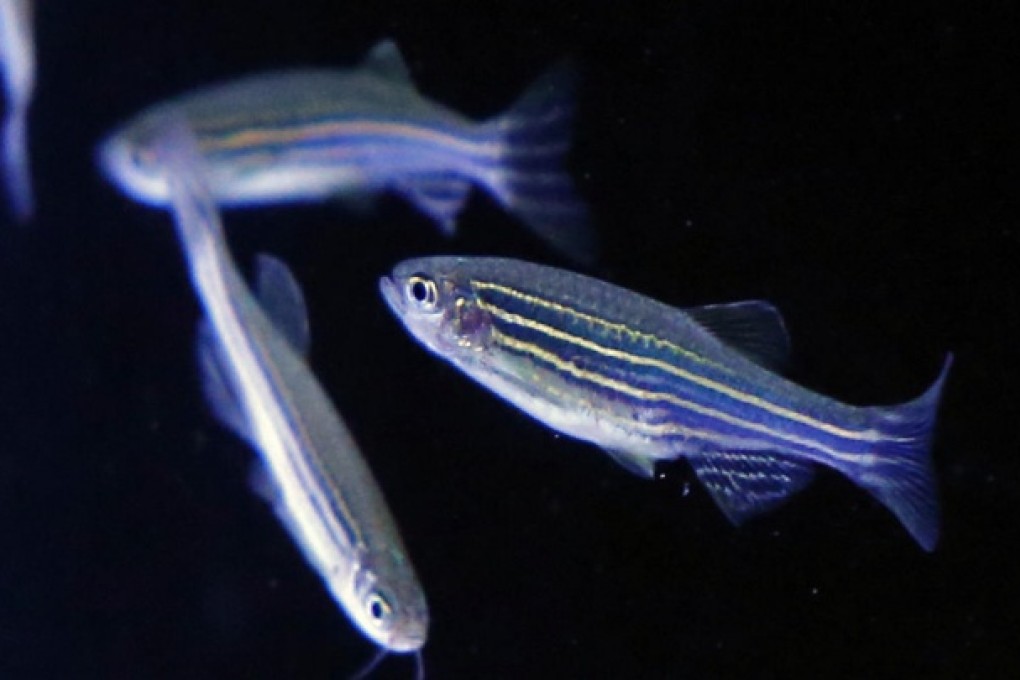Zebrafish helps push the frontiers of research
Freshwater species serves science in roles from water monitoring to medical advances

Zebrafish are unsung heroes of contemporary science. The humble tropical freshwater fish is an under-appreciated species that has helped scientists worldwide to make new discoveries and develop new technology.
Many Hongkongers keep zebrafish in aquariums, but they got a glimpse of their scientific significance when the Water Supplies Department deployed them as its latest tool for monitoring the quality of drinking water. Water authorities in other countries have put the 2.5 cm-long silvery fish to a similar use. But that is just one of many services zebrafish have performed for science and technology.
Last month, scientists at the University of Sheffield used zebrafish to achieve a breakthrough in treating epilepsy, discovering small molecules that may be used in anti-epileptic therapy.
In 2009, the fish helped an international team of scientists discover the secrets of drug addiction. The team created hundreds of mutant zebrafish that were not susceptible to amphetamines. The scientists' observations help identify a set of 139 genes that may make people susceptible to drug addiction.
In 2006, using zebrafish for tests, City University of Hong Kong researchers announced a finding that hypoxia could affect the sex development, sex differentiation and sex ratio of fish and possibly those of other animals.
The zebrafish is one of many species whose full genomes have been completely sequenced. Others include humans, pandas, silkworms, rice, malaria mosquitoes, honey bees, dogs, cats, fruit flies, chickens, mice, chimpanzees, potatoes and cannabis.